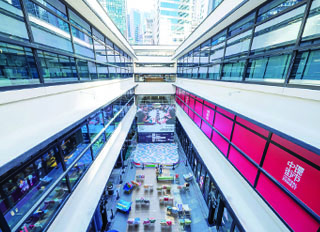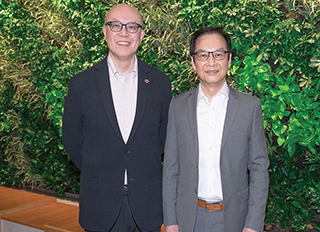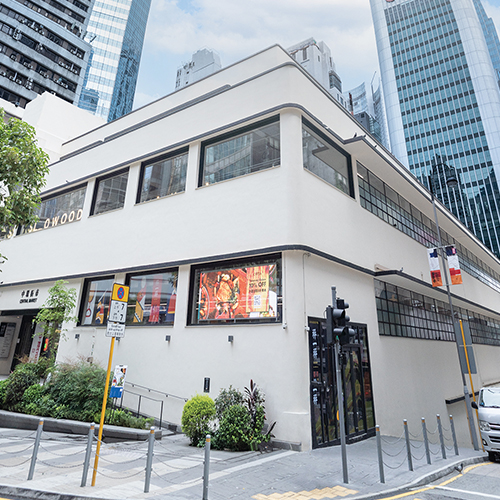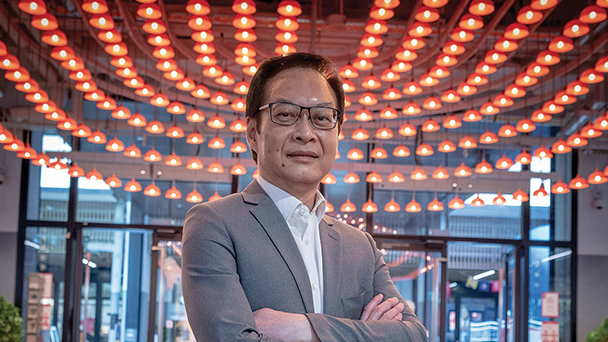Text: Sammy Poon
29 November 2021
Built in 1939, Central Market is a Grade III historical building with an 82-year history. When the Urban Renewal Authority (URA) took over the building in October 2017 to undertake restoration and revitalisation, it marked the beginning of the URA’s largest-ever conservation and revitalisation project. When the first phase of the project had been completed, the URA put out a tender to look for an operator for Central Market.
In February this year, Chinachem Group was awarded the contract to manage and operate the revitalised Central Market for a term of ten years.
In a recent conversation with Donald Choi, Executive Director and CEO of Chinachem Group, URA Managing Director Ir Wai Chi Sing talked about the Central Market collaboration with Chinachem Group and his views on urban renewal.
In February this year, Chinachem Group was awarded the contract to manage and operate the revitalised Central Market for a term of ten years.
In a recent conversation with Donald Choi, Executive Director and CEO of Chinachem Group, URA Managing Director Ir Wai Chi Sing talked about the Central Market collaboration with Chinachem Group and his views on urban renewal.

Donald Choi (right), Executive Director and CEO of Chinachem Group interviewed Ir Wai Chi Sing, Managing Director of the Urban Renewal Authority
" We are delighted to work with Chinachem Group and pass on this spirit of innovation by applying new technologies in the revitalised Central Market. These new technologies can also help draw in more people to enjoy the building’s facilities. In this way, the building is truly revitalised with a new life."

The revitalised Central Market retains the spirit of innovation

Donald Choi and Wai Chi Sing in H6 Conet, a community space under URA

The revitalised Central Market provides 8,000 square-foot community space
Moving forward with new planning tools
With limited financial and land resources to address the city’s need for urban regeneration, Wai points to the necessity for new planning tools. “The District Study for Yau Ma Tei and Mong Kok (YMDS) commenced in 2017 was completed this year. Among our recommendations, we have introduced the ‘transfer of plot ratio’, which will allow us to transfer the unused plot ratio of some buildings to those with higher development potential,” he notes. “By doing so, we can optimise the use of land resources and generate more resources from the developments for the preservation of old buildings, bringing greater benefits to the entire society.”
Wai added that the YMDS also sparked other inspirations, “Hong Kong’s old neighbourhoods have very high densities. Yau Ma Tei and Mong Kok have a density about six times the city average, with a large amount of buildings in the two areas aged over 50 years,” Wai observes. “With limited resources, we have to promote the adopting of preventive maintenance to alleviate urban decay by prolonging the service life of buildings.”
Passing on Central Market’s spirit of innovation
Regarding the Central Market project, Wai says, “I knew we would work on the Central Market revitalisation project when I assumed the role of Managing Director of the URA. At that time, I heard a foreign architect criticised the Central Market as not being worth preserving at all,” he recounts. “Today, there are still people questioning the value of preserving the building, and many hold widely differing views on the subject. If you look at the transformation of the Central Market from its third to its fourth iteration, in which old structures were replaced by the modern minimalistic design, no objection was raised by concern groups or conservationists at that time. However, if such a preservation plan were proposed today, would the proposal be favourably received by the public? I believe the standards for preservation change over time and there is no right or wrong answer.”
Apart from the building itself, what else has been preserved in Central Market? Wai thinks it is the spirit of innovation. “The fourth-generation Central Market, built in 1939, was very innovative in terms of building materials, design and construction methods, all of which added space to the building. We are delighted to work with Chinachem Group and pass on this spirit of innovation by applying new technologies in the revitalised Central Market. These new technologies can also help draw in more people to enjoy the building’s facilities. In this way, the building is truly revitalised with a new life.”
With Central Market swinging its doors open for the first phase of trial operation in August this year and its second phase of restoration works slated for completion in 2022, Wai says he has a wish.
“I appreciate Chinachem Group for utilising Central Market as a platform to help start-ups develop. Many young people want to set up a business but don’t know how to do it,” notes Wai. “As the Greater Bay Area is an engine for start-up development, I hope Central Market will provide opportunities for young people to experience innovation and technology, so that they can eventually branch out into the Greater Bay Area market to engage further technological exchanges, drawing Hong Kong closer to the Greater Bay Area. We look towards Chinachem Group to realise this future development.”
With limited financial and land resources to address the city’s need for urban regeneration, Wai points to the necessity for new planning tools. “The District Study for Yau Ma Tei and Mong Kok (YMDS) commenced in 2017 was completed this year. Among our recommendations, we have introduced the ‘transfer of plot ratio’, which will allow us to transfer the unused plot ratio of some buildings to those with higher development potential,” he notes. “By doing so, we can optimise the use of land resources and generate more resources from the developments for the preservation of old buildings, bringing greater benefits to the entire society.”
Wai added that the YMDS also sparked other inspirations, “Hong Kong’s old neighbourhoods have very high densities. Yau Ma Tei and Mong Kok have a density about six times the city average, with a large amount of buildings in the two areas aged over 50 years,” Wai observes. “With limited resources, we have to promote the adopting of preventive maintenance to alleviate urban decay by prolonging the service life of buildings.”
Passing on Central Market’s spirit of innovation
Regarding the Central Market project, Wai says, “I knew we would work on the Central Market revitalisation project when I assumed the role of Managing Director of the URA. At that time, I heard a foreign architect criticised the Central Market as not being worth preserving at all,” he recounts. “Today, there are still people questioning the value of preserving the building, and many hold widely differing views on the subject. If you look at the transformation of the Central Market from its third to its fourth iteration, in which old structures were replaced by the modern minimalistic design, no objection was raised by concern groups or conservationists at that time. However, if such a preservation plan were proposed today, would the proposal be favourably received by the public? I believe the standards for preservation change over time and there is no right or wrong answer.”
Apart from the building itself, what else has been preserved in Central Market? Wai thinks it is the spirit of innovation. “The fourth-generation Central Market, built in 1939, was very innovative in terms of building materials, design and construction methods, all of which added space to the building. We are delighted to work with Chinachem Group and pass on this spirit of innovation by applying new technologies in the revitalised Central Market. These new technologies can also help draw in more people to enjoy the building’s facilities. In this way, the building is truly revitalised with a new life.”
With Central Market swinging its doors open for the first phase of trial operation in August this year and its second phase of restoration works slated for completion in 2022, Wai says he has a wish.
“I appreciate Chinachem Group for utilising Central Market as a platform to help start-ups develop. Many young people want to set up a business but don’t know how to do it,” notes Wai. “As the Greater Bay Area is an engine for start-up development, I hope Central Market will provide opportunities for young people to experience innovation and technology, so that they can eventually branch out into the Greater Bay Area market to engage further technological exchanges, drawing Hong Kong closer to the Greater Bay Area. We look towards Chinachem Group to realise this future development.”

